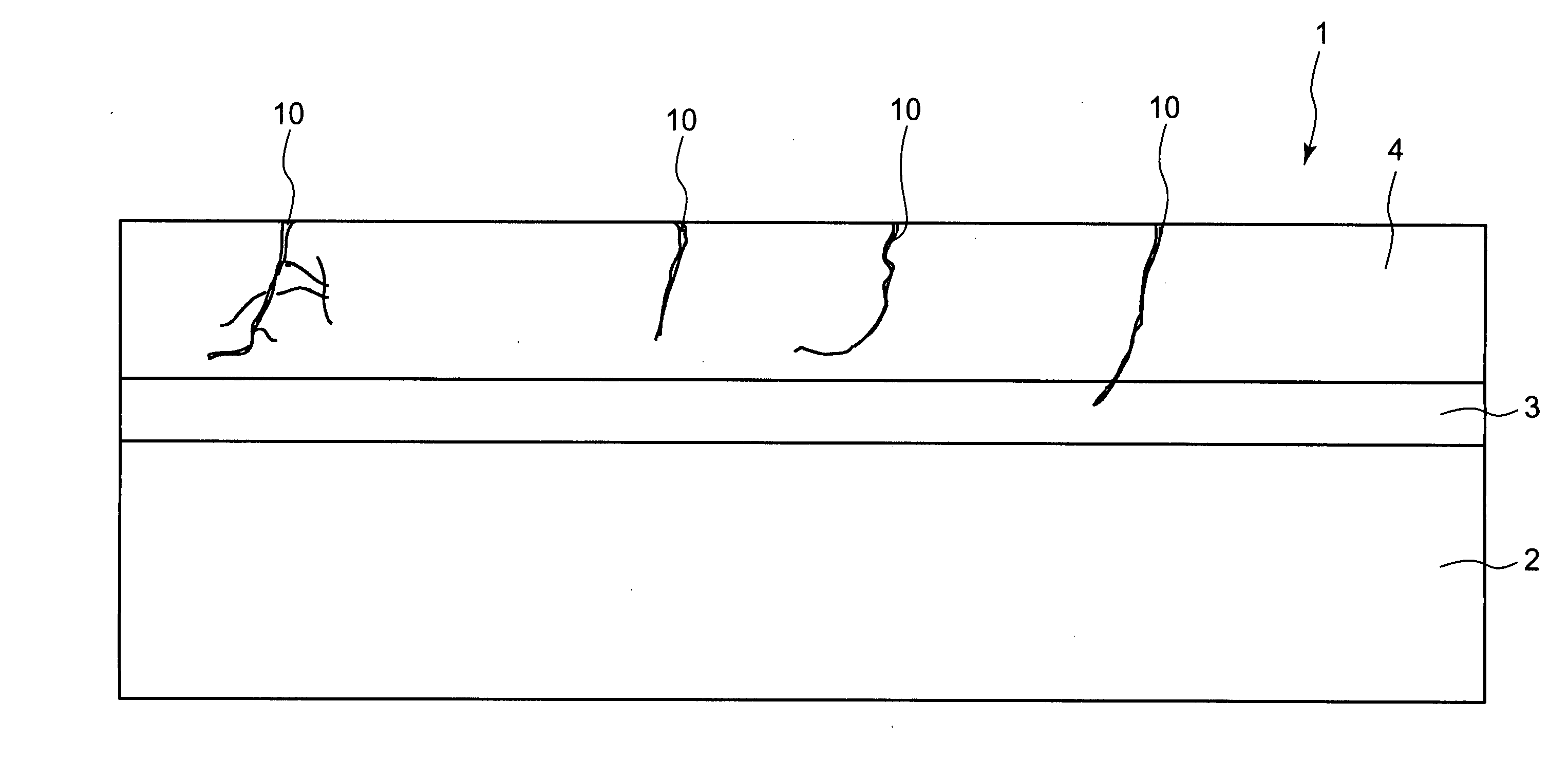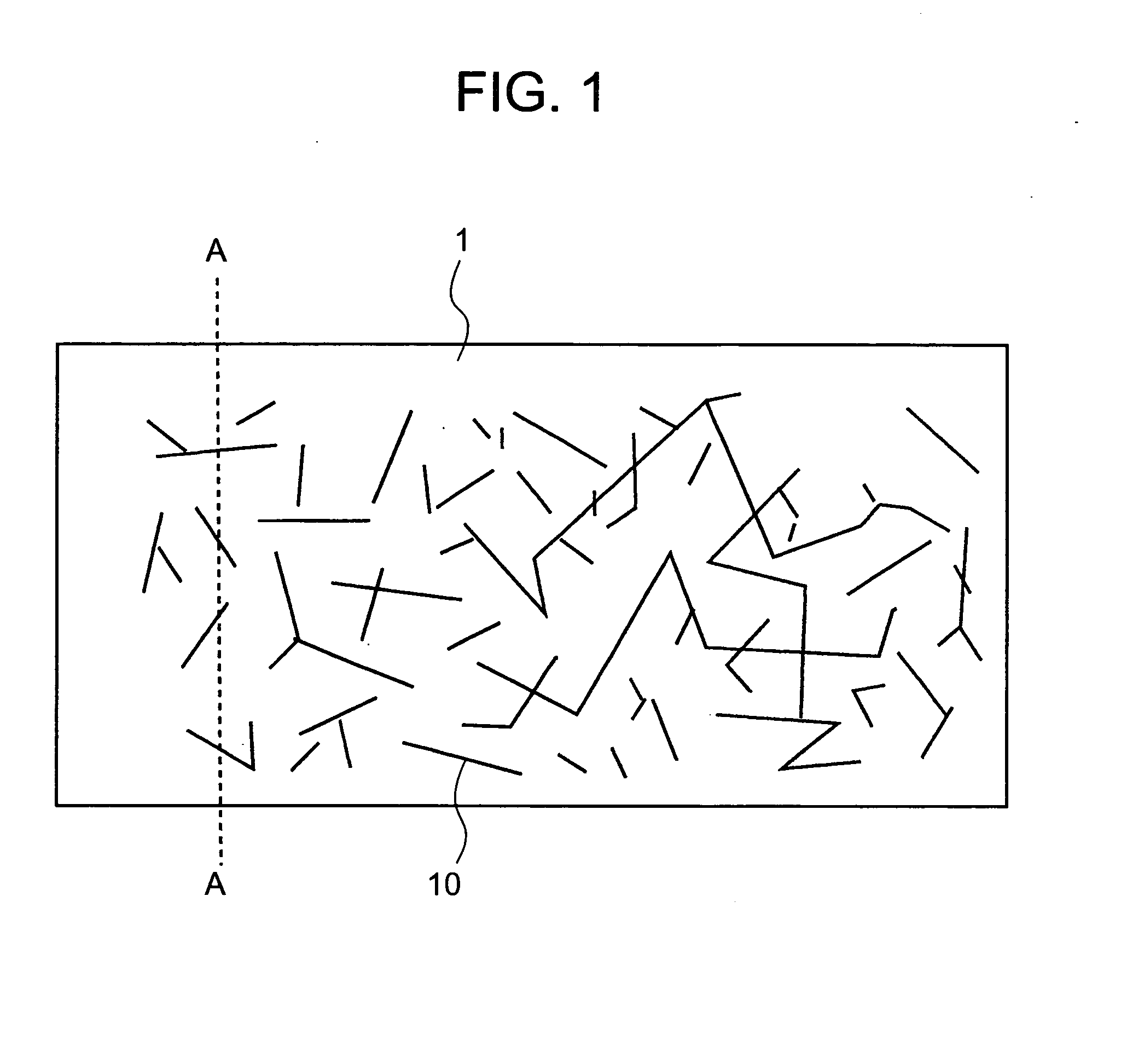Electrode for electrolysis and method of manufacturing electrode for electrolysis
a manufacturing method and electrolysis technology, applied in the direction of electrolysis components, coatings, chemistry apparatus and processes, etc., can solve the problems of low ozone generating efficiency of ozone generating electrodes, easy complex devices, and difficult to generate ozone water having a desired concentration with a high efficiency, etc., to achieve the effect of efficient generation
- Summary
- Abstract
- Description
- Claims
- Application Information
AI Technical Summary
Benefits of technology
Problems solved by technology
Method used
Image
Examples
embodiment 1
[0047] Next, there will be described a method of manufacturing an electrode for electrolysis with reference to a flow chart of FIG. 4. In this manufacturing method, the surface of a conductive substrate 2 is coated with an intermediate layer 3, and the surface of this intermediate layer 3 is coated with a surface layer 4.
[0048] First, a titanium plate having a thickness of 1 mm, a length of 80 mm and a width of 20 mm is used as the conductive substrate 2, and the surface (surface having a length of 80 mm and a width of 20 mm) of this conductive substrate 2 is polished by a sandpaper (step S1). It is to be noted that in an ozone generating electrode 1 of the present embodiment, the surface of the conductive substrate 2 is coated with the intermediate layer 3 and the surface layer 4 on only one side, and this surface layer 4 is opposed to a counter electrode, and used as a reactive surface of electrolysis. In a case where the ozone generating electrode 1 of the present invention is u...
embodiment 2
[0089] Next, another embodiment of the present invention will be described. An ozone generating electrode 1 of the present embodiment is different from that of Embodiment 1 in that instead of tantalum oxide in the surface layer 4 of Embodiment 1, aluminum oxide, titanium oxide or tungsten oxide is used.
[0090] It is to be noted that in Embodiment 1, to form the surface layer 4 of tantalum oxide, to the solvent prepared so that the mixture ratio between n-butyl acetate and dimethyl formamide is 95:5, tantalum ethoxide is dissolved in such an amount as to obtain the tantalum concentration of 1.45 mol / l, thereby forming the surface layer constituting material. On the other hand, in the present embodiment, in a case where a surface layer 4 is made of aluminum oxide, isoamyl acetate is used as a solvent, and in this solvent, an organic metal including aluminum (Al) is dissolved to obtain a surface constituting material. In a case where the surface layer 4 is made of titanium oxide, n-but...
PUM
| Property | Measurement | Unit |
|---|---|---|
| Distance | aaaaa | aaaaa |
| Distance | aaaaa | aaaaa |
| Nanoscale particle size | aaaaa | aaaaa |
Abstract
Description
Claims
Application Information
 Login to View More
Login to View More - R&D
- Intellectual Property
- Life Sciences
- Materials
- Tech Scout
- Unparalleled Data Quality
- Higher Quality Content
- 60% Fewer Hallucinations
Browse by: Latest US Patents, China's latest patents, Technical Efficacy Thesaurus, Application Domain, Technology Topic, Popular Technical Reports.
© 2025 PatSnap. All rights reserved.Legal|Privacy policy|Modern Slavery Act Transparency Statement|Sitemap|About US| Contact US: help@patsnap.com



